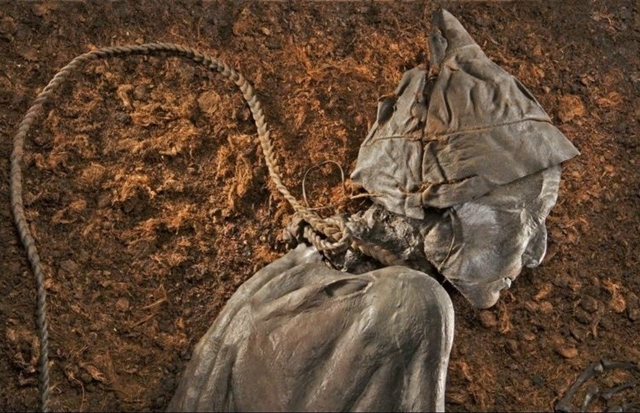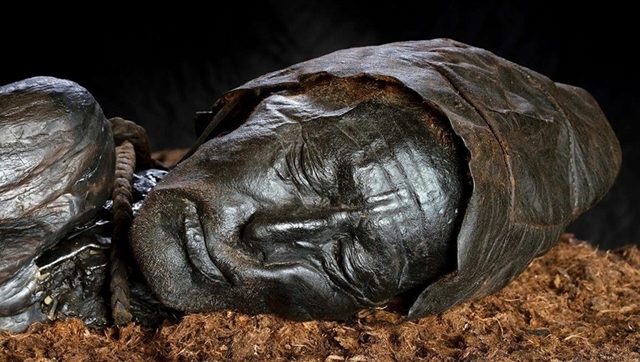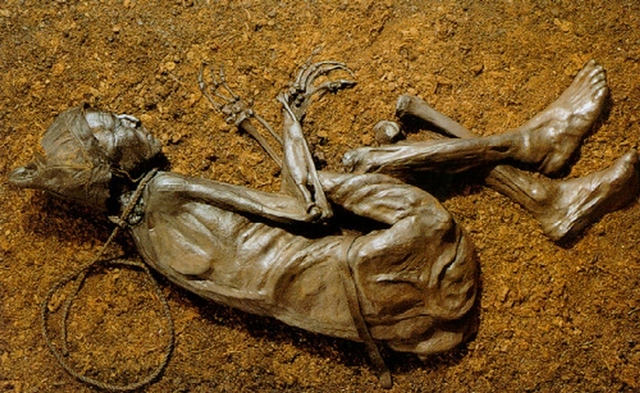In ancient times, there were many scary rituals, including sacrifice. A man was sacrificed 2,400 years ago, but the mummy is still preserved today.

Around mid-1950, a family in Denmark accidentally discovered a man’s body while they were digging peat. This body lies curled up, the rope still hanging around its neck. Terrified, this family reported it to the police. But researchers later confirmed that the body was not new, but was actually the mummy of an ancient person, dating back thousands of years.

Photo: News
The unfortunate man was determined to have died around 405 – 380 BC, when Denmark began to enter the Iron Age. When he died, he was only about 30 – 40 years old. The reason there was a rope around his neck was because he was a person who was sacrificed by hanging.
Scientists named the mummy Tollund Man. This is the name of the village where this mummy is located. It is considered the most spectacular discovery ever. Because even though more than 2,400 years have passed, the victim’s facial features are still intact and the soft tissues are not affected. At first glance, Tollund Man is very calm and calm when facing death.

Photo: HistoryPhoto: Antiquity
One of the reasons believed to help Tollund Man not decompose is thanks to the mud. Sludge is highly acidic and low in nutrients and oxygen, so microorganisms cannot survive. It accidentally became the place to protect Tollund Man’s body. Lying in mud for thousands of years, Tollund Man still has a well-preserved appearance.
What’s even more special about Tollund Man is that experts can also analyze the contents of his intestines. A research team discovered that Tollund Man was infected with whipworms and tapeworms. In 1951, analysis showed the contents of this mummy’s intestines, revealing what he had eaten before being sacrificed.

Photo: Silkeborg Museum
Specifically, Tollund Man ate thick porridge. This type of porridge is made from barley, flax seeds, weed seeds, plus a little fish. During the Iron Age, fish was not considered a main food for humans.
Ingredients of Tollund Man’s last meal. Photo: PS Henriksen
Besides, Tollund Man’s intestines still contain parasite eggs. Most likely he also ate fresh meat, undercooked meat or drank water containing parasitic animal eggs. Before being sacrificed, it may have been Tollund Man’s last meal.





